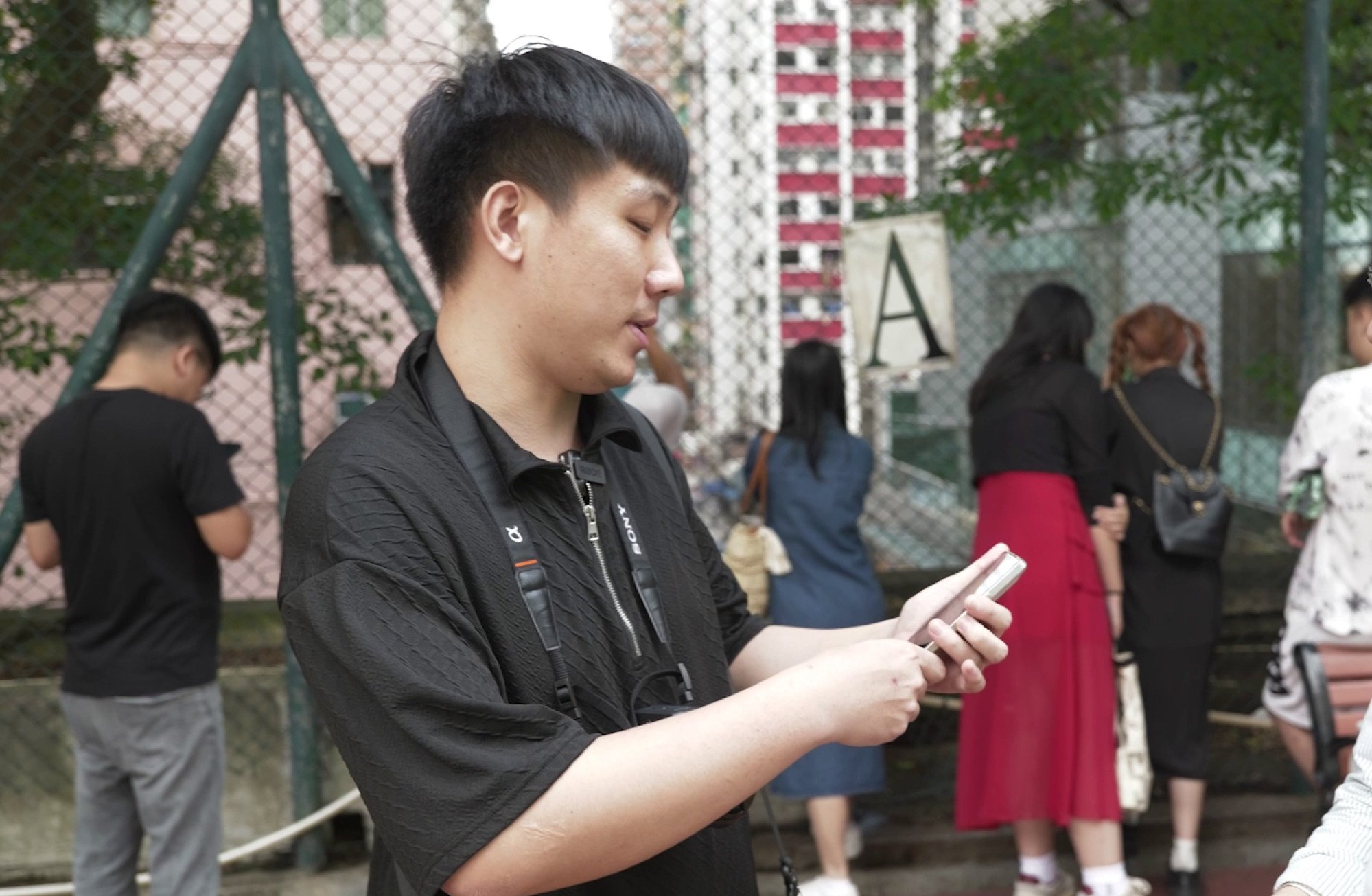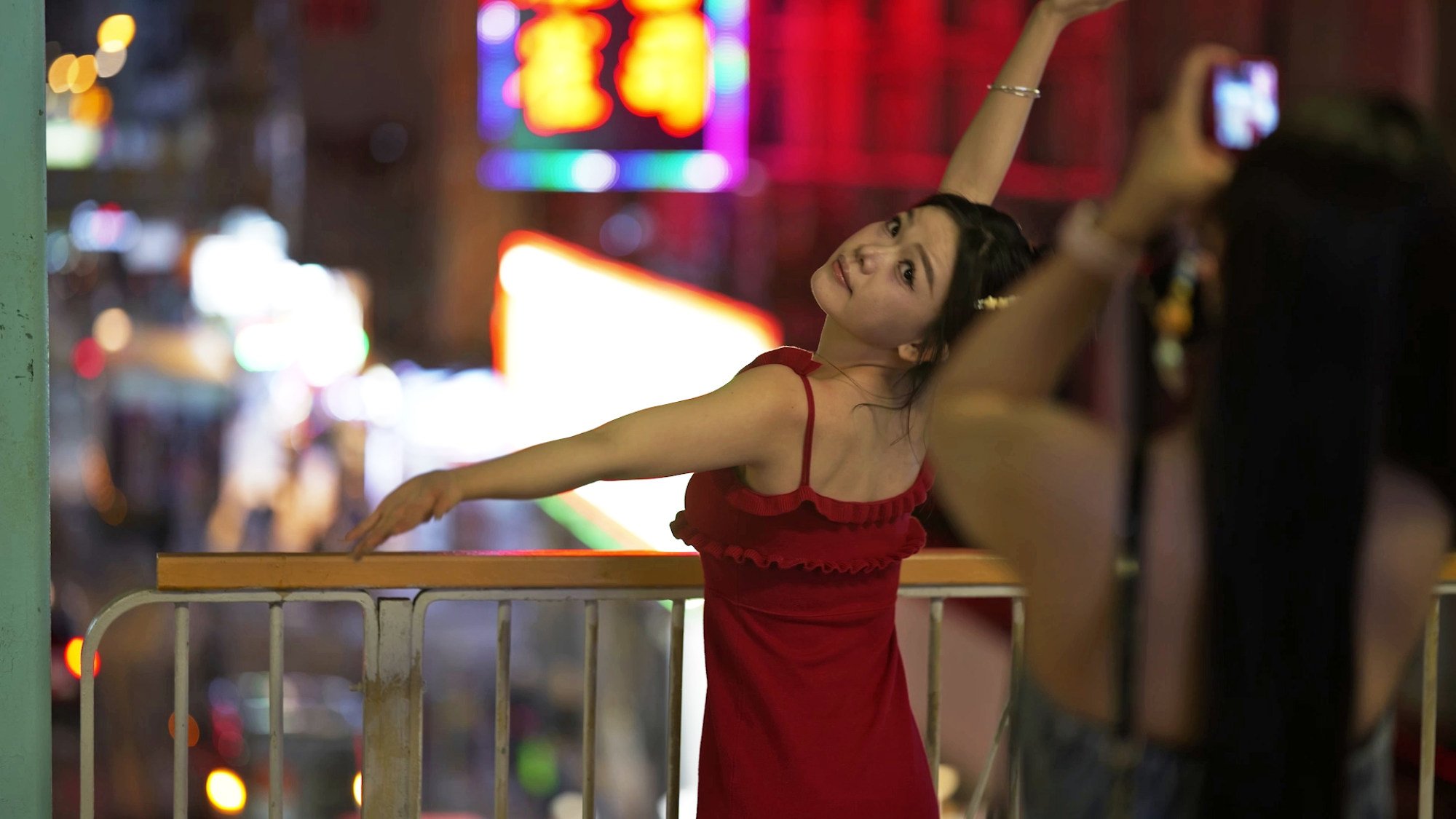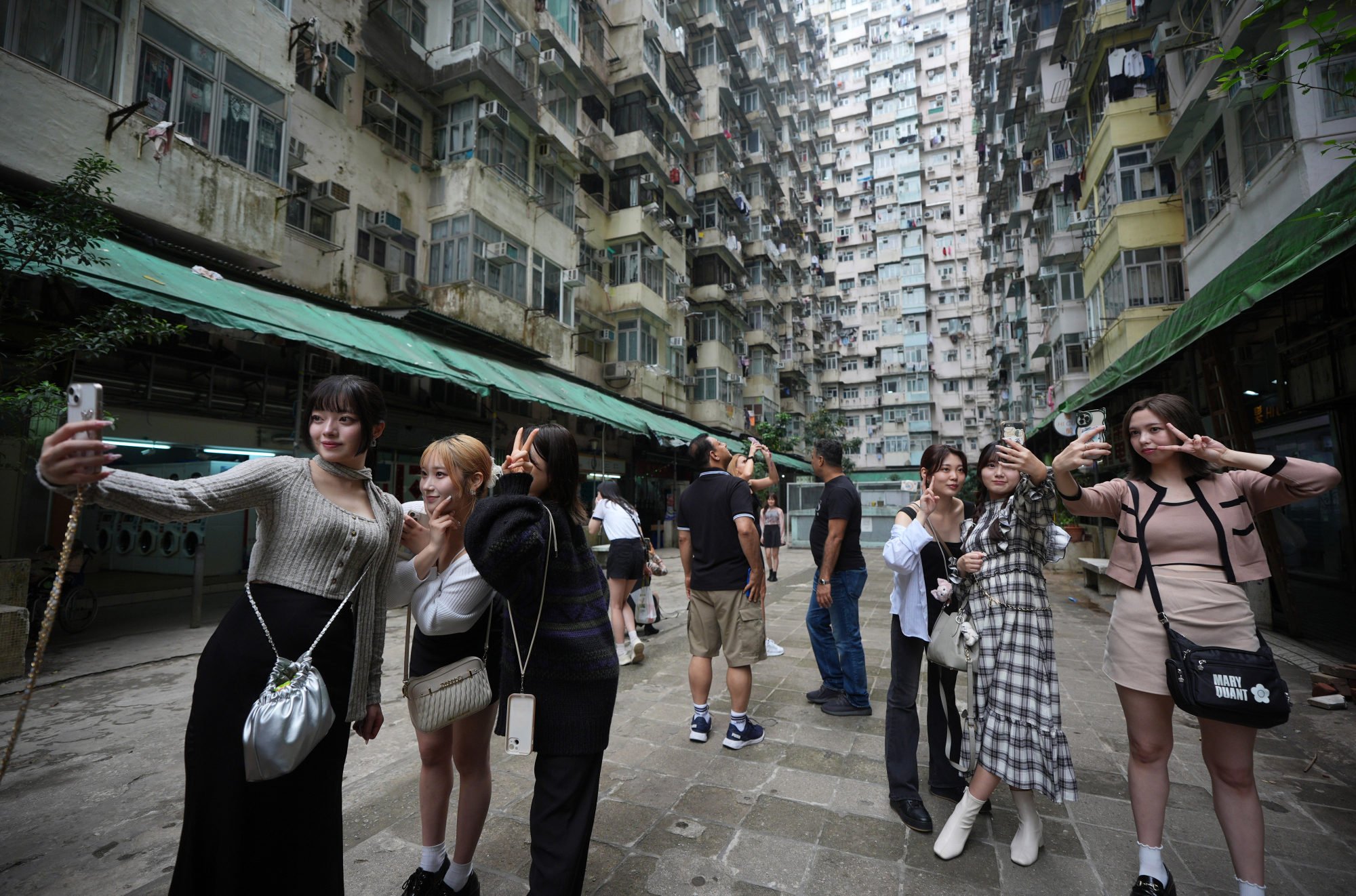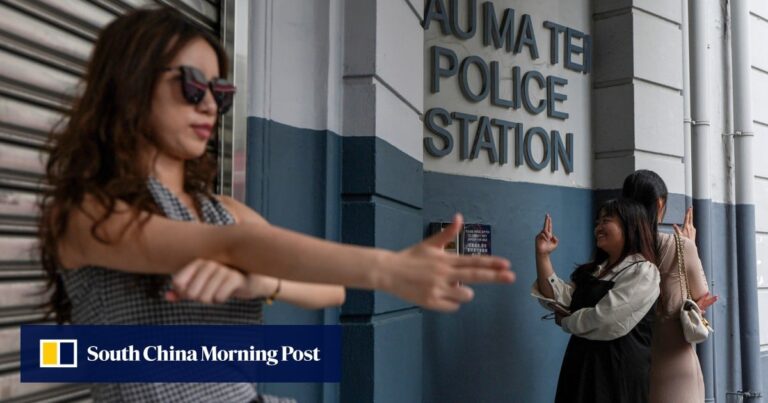It was a tip Wei got from Xiaohongshu, a popular Instagram-like social media platform in mainland China.
“I’d rather experience the culture here. I’m not really interested in shopping,” said the beauty industry professional from Shenyang, capital of northeastern China’s Liaoning province.
“To be honest, I can get what I want on the mainland, but the same items might be more expensive here, so I have to bring them back.”
 Wei Chia-le, a tourist from Shenyang, said the Little Red Book app helped him explore Hong Kong culture. Photo: Daniel Suen
Wei Chia-le, a tourist from Shenyang, said the Little Red Book app helped him explore Hong Kong culture. Photo: Daniel Suen
The couple, who were in Hong Kong for five days, were also captivated by the area’s decades-old residential architecture.
Following a “travel strategy” posted on a social media platform, they chose Causeway Bay, a popular shopping district, as their next destination, where again, their purpose was not to shop but to check out the filming locations of his favorite Hong Kong movie series, “Young and Dangerous Young People.”
Known for its lifestyle tips and travel recommendations, Xiaohongshu has over 200 million monthly active users, the majority of whom are in mainland China, with over 70% of users born in the 1990s.
With a focus on authentic experiences and community, the app’s impact is not limited to China, but also reaches the broader Chinese-speaking community in other regions.
A Malaysian tourist who gave his name only as Apple also found detailed directions on a mobile app to where to take the best selfies, and lined up with others on the same basketball court.
“This view, combined with the background music, makes it seem like a very romantic place,” she says. “I like to take photos as well as short videos of the scenery and delicious food.”
“[Hong Kong] Dramas and movies are very popular in Malaysia, so we often go out to find the filming locations, which gives us a sense of familiarity.”
Another offbeat attraction popular with Little Red Book is Mong Kok’s busy pedestrian bridge overlooking the red minibus terminus, where colorful neon signs adorning the residential buildings make it a popular spot for tourists looking to experience Hong Kong’s nostalgic vintage feel.
 Tourists taking photos in Mong Kok. Photo: Daniel Suen
Tourists taking photos in Mong Kok. Photo: Daniel Suen
Among those posing at the scene was Zhu Junyu, 22, who came from Guangzhou with eight school friends. Zhu Junyu said the group planned to stay in Hong Kong for three to four days and spend about 700 to 800 yuan (US$110), excluding hotel fees.
“I like [cityscape of] “Hong Kong’s densely packed skyscrapers and big road signs have a retro feel to them,” Chew said. “This comes from the Hong Kong TV we watched as kids.”
Little Red Book has gradually transformed Hong Kong’s tourism scene as influencers share ideas and tips about previously unknown destinations.
Some people even brought McDonald’s takeaways onto McDonnell Road in the Mid-Levels neighborhood for a fun photo op, as the name of the road is the same as the Chinese characters for the fast-food chain.
Others gathered at the Yau Ma Tei Police Station heritage complex to take photos of the facade of the iconic building where many TV shows are filmed.
The increase in experiential tourism comes after retail sales fell 14.7 percent year-over-year in April as the city seeks to restore visitor numbers to pre-pandemic levels to help improve its economy.
Last year, the city attracted 34 million tourists, 55% of pre-COVID levels, with tourists from mainland China remaining the largest source, accounting for around 80% of the total.
Fannie Yan Shu-fang, secretary-general of the Travel Industry Council, told the Post that it was clear tourists were no longer flocking to Hong Kong to shop for luxury goods, partly due to the global economic downturn.
 A tourist takes a photo of the Yik Chong Building in Quarry Bay. Photo: Eugene Lee
A tourist takes a photo of the Yik Chong Building in Quarry Bay. Photo: Eugene Lee
He said the latest trend of focusing on experiences is in line with the industry’s drive to deepen cultural tourism. Xia Baolong, director-general of the Hong Kong and Macau Affairs Office, has previously said anywhere in Hong Kong can become a tourist destination.
“trip [experience] “Food should be the main dish, and shopping is the side dish, something you do on the way. If people only come here to shop, it’s not sustainable,” Yen said. “If we want tourists to return and stay longer, we need to give them new places to explore.”
Ienne said Congress has been working with the food and beverage and retail industries in efforts to increase spending.
Local travel agencies can capitalize on this trend by organizing day tours and short trips to give visitors a deeper understanding of the history and culture of photogenic locations, she said.
Earlier this year, the city council held a competition to design itineraries, with submissions including a city walk themed around Cantonese pop superstar Leslie Cheung and an overnight trip to the scenic outlying island of Cheung Chau.
The Hong Kong Tourism Board has partnered with Little Red Book since last year to co-create content to promote cultural tourism in Hong Kong. The partnership has produced more than 10,000 posts about Hong Kong travel.
The campaign, titled “My Hong Kong Record”, invited 88 influencers to explore Hong Kong and share their first-hand experiences and tips. In April this year, the two parties signed an agreement to strengthen cooperation.

